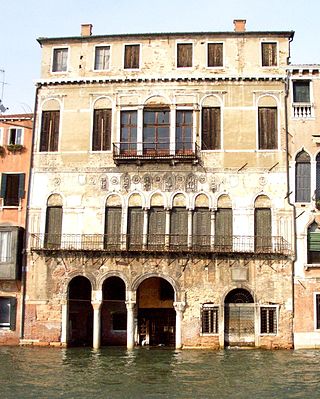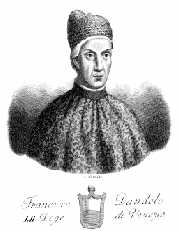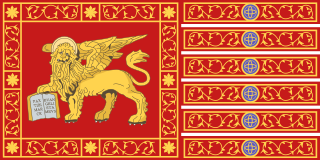| Francesco's Venice | |
|---|---|
| Genre | Documentary |
| Presented by | Francesco da Mosto |
| Country of origin | United Kingdom |
| No. of seasons | 1 |
| No. of episodes | 4 |
| Original release | |
| Network | BBC Two |
| Release | October 16 – November 6, 2004 |
Francesco's Venice is a four-part BBC television documentary series hosted by Francesco da Mosto and first broadcast on BBC2 in 2004. The series follows da Mosto as he explores the history of Venice, beginning with its creation in the 5th century and concluding in the modern era. Each episode focuses upon a certain area of Venetian history, interlaced with various anecdotes from da Mosto's own experiences and family history. A book of the same name was published to accompany the series in 2004. Renowned cinematographer and Artist Fred Fabre achieved distinction in 2005 when he was honoured with a BAFTA for his outstanding work on the series.
| # | Episode | Content | Original Broadcast |
|---|---|---|---|
| 1 | "Blood" | da Mosta family history, Doge of Venice, origins of Venice St. Mark, St. Mark's Square | 16 October 2004 |
| 2 | "Beauty" | Andrea Palladio, Marco Polo, Rialto Bridge, The Venetian Empire | 23 October 2004 |
| 3 | "Sex" | Antonio Vivaldi, Black Death, Giacomo Casanova, Napoleon's Invasion | 30 October 2004 |
| 4 | "Death" | Byron, Venetian Conservationist Movement, tourism, Venice's future | 6 November 2004 |
Francesco da Mosto is an Italian architect, author, historian, film maker and television presenter. He presented the three BBC 2 series Francesco's Venice (2004) and Francesco's Italy: Top to Toe (2006) where he explored the country in an Alfa Romeo Spider and Francesco's Mediterranean Voyage which sees him sailing aboard the Camper and Nicholsons ketch Black Swan from his home city, Venice, to Istanbul, visiting places including Split, Mostar and Dubrovnik. He presented the two part BBC 2 series: Shakespeare in Italy, (2012).
Francesco's Italy: Top to Toe is a four-part BBC television series hosted by Francesco da Mosto and originally shown on BBC Two from 11 June to 2 July 2006. In the series, da Mosto drives his Alfa Romeo Spider the length of Italy, from North to South, exploring the architecture and traditions in different regions.

The Ca' da Mosto is a 13th-century Venetian-Byzantine style palace, the oldest on the Grand Canal, located between the Rio dei Santi Apostoli and the Palazzo Bollani Erizzo, in the sestiere of Cannaregio in Venice, Italy. Today, it is home to the Venice Venice Hotel.

Francesco Dandolo was the 52nd Doge of Venice. He ruled from 1329 to 1339. During his reign Venice began its policy of extending its territory on the Italian mainland.

Luigi De Giudici was an Italian painter of the Venetian anti-academic movement in the first years of the twentieth century. His works were exhibited at Ca' Pesaro between 1912 and 1920 and at the International Exposition of Paris (1937).

The Domini di Terraferma was the hinterland territories of the Republic of Venice beyond the Adriatic coast in Northeast Italy. They were one of the three subdivisions of the Republic's possessions, the other two being the original Dogado (Duchy) and the Stato da Màr.
This list explores the instances of which the city of Venice, Italy, has been mentioned or alluded to in various media.
Francesco's Mediterranean Voyage is a BBC Television documentary series first aired in 2008. It follows Venetian architect Francesco da Mosto as he follows the historical Venetian trading route from Venice through the Adriatic Sea, Corinth Canal, Aegean Sea and Dardanelles to Istanbul. This route was taken by, among others, his ancestor Alvise da Mosto. Travelling as a member of the crew of the Camper and Nicholsons ketch Black Swan, along the way he stops off at the ports that were visited by the earlier traders and were in many cases part of the Venetian Empire. The series was written by Da Mosto.

Antonio Venier was a Doge of Venice, member of the House of Venier, reigning from October 1382 to his death. He was interred in the Basilica di San Giovanni e Paolo, a traditional burial place of the doges. He was married to Agnese da Mosto.

The office of Procurator of Saint Mark was one of the few lifetime appointments in the government of the Venetian Republic and was considered second only to that of the doge in prestige. It was routinely occupied by nobles belonging to the most influential families and typically represented the climax of a distinguished political career, although it was often an intermediate position prior to election as doge.

The Senate, formally the Consiglio dei Pregadi or Rogati, was the main deliberative and legislative body of the Republic of Venice.

The Palazzi Mocenigo consist of the following complex of palazzos on the Grand Canal in Venice, Italy:

The Minor Council or Ducal Council was one of the main constitutional bodies of the Republic of Venice, and served both as advisors and partners to the Doge of Venice, sharing and limiting his authority.

The island of Cyprus was an overseas possession of the Republic of Venice from 1489, when the independent Kingdom of Cyprus ended, until 1571, when the island was conquered by the Ottoman Empire.
The Bailo of Corfu was the leader of the Venetian delegation to the island of Corfu who oversaw the affairs of the island while under Venetian rule and protected the commercial and military interests of the Republic of Venice. The first mention of a bailo in Corfu is in 1386 and is found in a Greek chronicle. The bailo of Corfu is also mentioned in a document by historian Marco Guazzo from 1544.

Alvise Da Mosto was one of twelve Navigatori-class destroyers, built for the Regia Marina between the late 1920s and the early 1930s. During World War II, she participated in several minelaying missions in the Sicilian Channel and escorted convoys between Italy and Libya until her sinking by the British Force K.
Gregory Dowling is an author, translator, literary critic and Professor of Anglo-American Literature at the Università Ca’ Foscari in Venice.
The Savii or Savi di Terraferma was a board of five senior magistrates of the Republic of Venice, initially charged with the defence of the Republic's possessions in the Italian mainland. Gradually they assumed specific roles pertaining to the supervision of public finances, the military administration, state ceremonies, and urgent ad hoc matters.

The Provveditore Generale da Mar was the most senior peacetime office in the Venetian navy and in charge of governing the Venetian overseas empire.
The grand chancellor was one of the most senior offices in the Republic of Venice. Alone among the senior magistracies, which were reserved for the Venetian patriciate, it was held by common citizens.